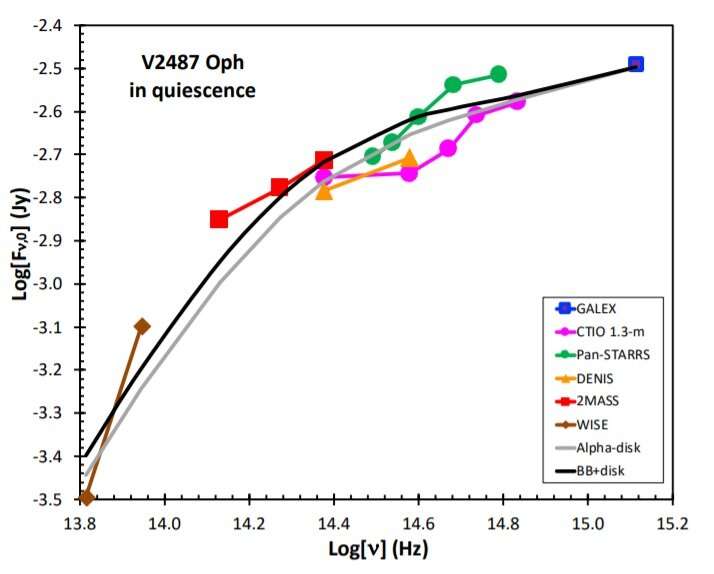January 18, 2022 report
Observations detect frequent extreme superflares on the nova V2487 Oph

Astronomers from Louisiana State University (LSU) and College of Charleston have performed photometric observations of a recurrent nova known as V2487 Oph. The observational campaign identified superflares on this source occurring almost daily. The finding was detailed in a paper published January 11 on arXiv.org.
Superflares are massive bursts of energy from a stellar surface. Detecting new flares of this type and studying them in detail is essential to better understand the origin of these events and the interaction between the magnetic fields and surfaces of stars.
Recurrent novae (RNe) are cataclysmic variables (CVs) consisting of a white dwarf accreting material from a companion star, and that have undergone more than one nova eruption. They have much shorter recurrence time when compared to the classical novae (CNe), which likely recur with a timescale of up to 100,000 years.
V2487 Oph (or Nova Ophiuchi 1998) was first detected on June 15, 1998 as a very fast nova reaching a peak magnitude of 9.5 mag. Subsequent observations of this source have found that its best calculated recurrence time-scale is 18 years, hence V2487 Oph is likely to recur any year now. In general, the collected data suggest that this object is an RN.
Given that to date only few observations of V2487 Oph have been conducted and therefore it remains a poorly studied nova, a team of astronomers led by LSU's Bradley E. Shaefer decided to perform a photometric study of this source. For this purpose, they used data mainly from the McDonald Observatory and Cerro Tololo Inter-American Observatory (CTIO).
"With a prior interest in RNe and the suggestions that V2487 Oph was a RN, we started a two-part study in 2002. First, we looked for photometric modulation tied to the orbital period, as a long
More information: Bradley E. Schaefer, Ashley Pagnotta, Seth Zoppelt, Discovery of Extreme, Roughly-Daily Superflares on the Recurrent Nova V2487 Oph. arXiv:2201.04080v1 [astro-ph.SR], arxiv.org/abs/2201.04080
© 2022 Science X Network




















